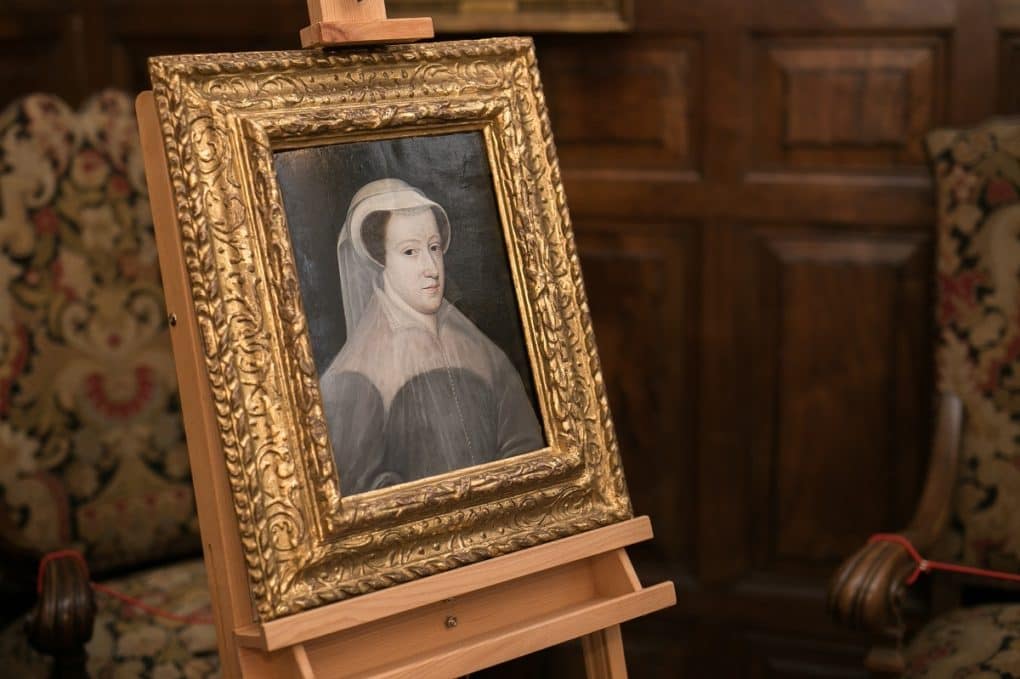

On 8 February 2019 – 432 years after she died on the same date in 1587 – a portrait of Mary, Queen of Scots went on display at Hever Castle. The extremely rare painting of the monarch was officially unveiled in the Castle’s Inner Hall.
Paintings of Mary created during her lifetime are few and far between: “In Scotland, which she ruled in person as queen-regnant from 1561 to 1568, there were few painters of talent; while in England, where she spent the rest of her life, she was a political prisoner – though in 1578 she did manage to sit for an important portrait miniature by Nicholas Hillyard, which is the basis of almost all her subsequent images.”
Hever Castle’s portrait was recently rediscovered in France, where it was unidentified and thought to date from the 17th century. However, dendrochronological examination of the oak panel on which the portrait is painted, revealed that it was created after 1547 (Mary was born in December 1542).
The work is believed to come from the studio of François Clouet (c.1510 –1572), a French Renaissance miniaturist and painter, particularly known for his detailed portraits of the French ruling family.
The discovery of this contemporary likeness of Mary Queen of Scots is particularly important as there are only two portraits of her in mourning – the second one (in full mourning) is in the Royal Collection. The Hever work shows Mary in a form of mourning, but not the full mourning seen in earlier portraits.
It was around this period that the famous ‘en deuil blanc’ (in white mourning) type of portrait became popular. This was a less strict form of mourning, which might have been worn at a later date following a bereavement. It is thought that Mary wearing ‘en deuil blanc’ was occasioned by the death of three close members of her family within eighteen months: her father-in-law Henri II (July 1559), her mother Mary of Guise (June, 1560) and then her husband, François II (December 1560).
Book your visit to Hever Castle & Gardens.
Within the grounds of the Hever Castle Estate, there are two opportunities for you to stay the night with us.
Hever Castle has played host to many important events and celebrations for over 600 years. In 1903 when William Waldorf Astor set about restoring Hever Castle to its former glory, he added the Astor Wing, to accommodate his family and guests, before creating a lake and the spectacular Italian Garden to house his impressive collection of ancient Greek and Roman statuary.
There are multiple places to eat & drink across the Hever Castle Estate. Select between the Castle & Gardens and Golf Club below to discover more.
Set in the mature grounds of the Hever Castle Estate, Hever Castle Golf Club is a 27 hole Kent golf course that will encourage and inspire all golf enthusiasts.
Set in the mature grounds of the Hever Castle Estate, the Wellbeing Centre consists of five smart treatment rooms.